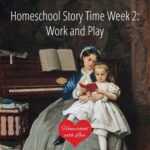
Would you like to help your child improve her reading fluency?
Reading fluency is the ability to read quickly, smoothly, and accurately. It encompasses both reading aloud and silent reading.
What distinguishes a fluent reader from a struggling ones is that a fluent reader can recognize words and understand their meaning at the same time. This enables her to read quickly and not get bogged down by decoding.
There are a number of ways you can help your child improve her reading fluency. Let’s look at what they are.
*This post contains paid links. I earn a small commission from the sale of products purchased via these links. Please see my disclosure for details.
15 Ways to Improve Reading Fluency
- Read aloud to your child. Do it with expression and do it daily. By reading aloud to your child, you are modeling reading fluency. You may want to run your finger under the words sometimes so that your child can see the relation between the written and spoken word.
- Let your child listen to books on cd while following along in the book. You may want to encourage your child to run his finger under the words as they are read.
- Do echo reading with your child. Read aloud one sentence from a simple book or poem, then have your child echo it back.
- Let your child reread favorite books as much as she likes. Repetition is a good tool for learning.
- Do choral reading with your child. Choral reading is when you and your child read aloud a book in unison.
- Let your child read simple books with labeled pictures. Richard Scarry has written some wonderful books with labeled pictures including Richard Scarry’s Best Word Book Ever, Richard Scarry’s Best First Book Ever, and Richard Scarry’s Cars and Trucks from A to Z.
- Let your child order words to make a sentence. Write a sentence from a story or phrase from a poem in large print on paper or card stock. Cut apart the words and have your child put them in order.
- Use flashcards. These can be created from sight words or words in a phonics program.
- Make a word wall. A word wall is made by hanging up word wall letters like these on a wall. Under each letter label, put words that begin with that letter. You can usually find words in books your child enjoys reading or a phonics program.
- Label things in your house. Create small labels for items in your house like furniture and have your child tape the labels to the items.
- Use the cloze reading method. With this method, you read aloud a book to your child, but periodically leave out a word. Your child should fill in the missing word as you go. For example, if read aloud Brown Bear, Brown Bear, What Do You See?, you might say this: “Brown Bear, Brown Bear, What do you _____?” and your child would fill in the word “see.”
- Allow your child to choose books of interest. If your daughter likes Dr. Seuss books, let her read those. If your son likes dinosaur books, let him read those. Choice is a motivating factor when it comes to reading so allow your child to select books of interest whenever possible
- Have your child read with a sibling. This can go one of two ways. She can read with an older sibling who can correct her mistakes or she can read with a younger sibling which will make her feel grown-up.
- Have your child read aloud to you. When she does so, you can help her as she stumbles on difficult words.
- Let your child participate in Reader’s Theater. Reader’s Theater is a fun way for your child to improve reading fluency by reading aloud with a group of two or more people. It has many other benefits including improving listening and speaking skills and encouraging children to work together. You can find some free Reader’s Theater scripts here.
If you’d like more scripts, you may be interested in one of my Reader’s Theater books:
Reader’s Theater: Classic Poetry is a collection of 46 classic poems including “The Sorcerer’s Apprentice,” “Deeds of Kindness,” and “Try Again” that have been converted into easy-to-use scripts.
Reader’s Theater: Christian Poetry is a collection of 44 Christian poems including “God is Good,” “What Christ Said,” and “Robinson Crusoe’s Hymn” which are set up for Reader’s Theater groups of two or more performers.
I hope these scripts bless your homeschool family or co-op!









